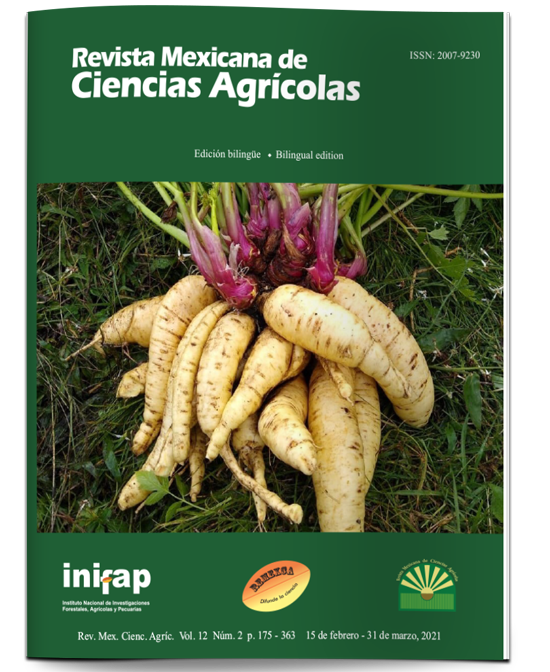Characterization of mombaza grass as raw material to produce bioethanol
DOI:
https://doi.org/10.29312/remexca.v12i2.2441Keywords:
biofuel, biomass, calorific value, chemical composition grassAbstract
The objective of this study, made in 2017, was to characterize mombaza grass (Megathyrsus maximus) to assess its potential as a raw material for the production of liquid biofuel (bioethanol). Annual biomass production, calorific power, chemical composition and theoretical bioethanol yield were determined at four cutting frequencies (30, 60, 90 and 120 d after regrowth). The data were analyzed with the GLM (SAS) procedure and the means of the treatments were compared with the Tukey test (p 0.05). The highest biomass production, calorific power, energy production, bioethanol production, FDN, LDA and hemicellulose were obtained at the cutting frequency of 120 d with 11 Mg ha-1 year-1; 16.1 MJ kg-1; 178.4 GJ ha-1 year-1; 238.2 L Mg-1 MS and 68.6, 6.5, 23.3%, respectively. However, the highest cellulose and FDA content were found at the cutting frequency of 90 d, with 41.2 and 47.4%, respectively. The highest values of humidity, PC and ash were found at the cutting frequency of 30 d with values of 8.2, 10.4 and 12.1%, respectively, while the EE content was higher at the cutting frequency of 60 d (1.6%). According to the results obtained in this study mombaza grass (Megathyrsus maximus) can be considered as an attractive raw material for the production of bioethanol in tropical climates.
Downloads
Downloads
Published
How to Cite
Issue
Section
License
The authors who publish in Revista Mexicana de Ciencias Agrícolas accept the following conditions:
In accordance with copyright laws, Revista Mexicana de Ciencias Agrícolas recognizes and respects the authors’ moral right and ownership of property rights which will be transferred to the journal for dissemination in open access. Invariably, all the authors have to sign a letter of transfer of property rights and of originality of the article to Instituto Nacional de Investigaciones Forestales, Agrícolas y Pecuarias (INIFAP) [National Institute of Forestry, Agricultural and Livestock Research]. The author(s) must pay a fee for the reception of articles before proceeding to editorial review.
All the texts published by Revista Mexicana de Ciencias Agrícolas —with no exception— are distributed under a Creative Commons License Attribution-NonCommercial 4.0 International (CC BY-NC 4.0), which allows third parties to use the publication as long as the work’s authorship and its first publication in this journal are mentioned.
The author(s) can enter into independent and additional contractual agreements for the nonexclusive distribution of the version of the article published in Revista Mexicana de Ciencias Agrícolas (for example include it into an institutional repository or publish it in a book) as long as it is clearly and explicitly indicated that the work was published for the first time in Revista Mexicana de Ciencias Agrícolas.
For all the above, the authors shall send the Letter-transfer of Property Rights for the first publication duly filled in and signed by the author(s). This form must be sent as a PDF file to: revista_atm@yahoo.com.mx; cienciasagricola@inifap.gob.mx; remexca2017@gmail.
This work is licensed under a Creative Commons Attribution-Noncommercial 4.0 International license.



